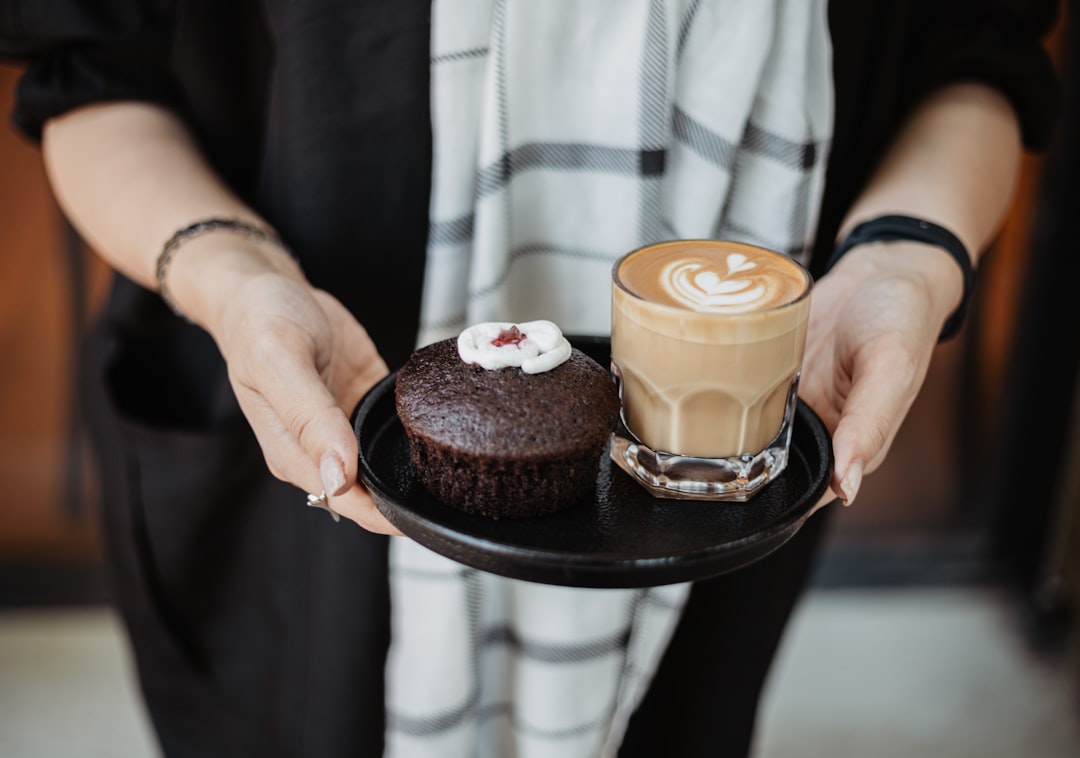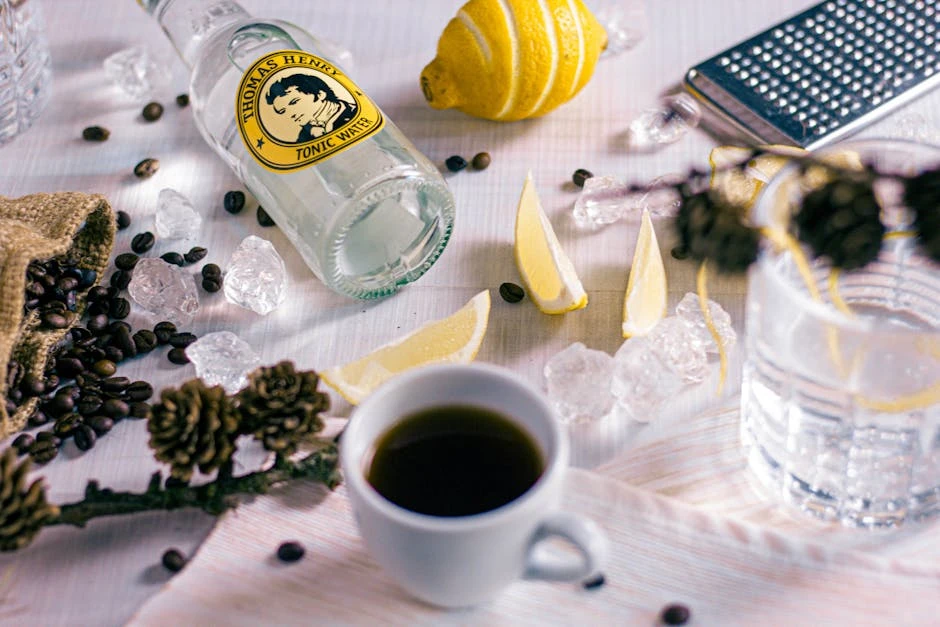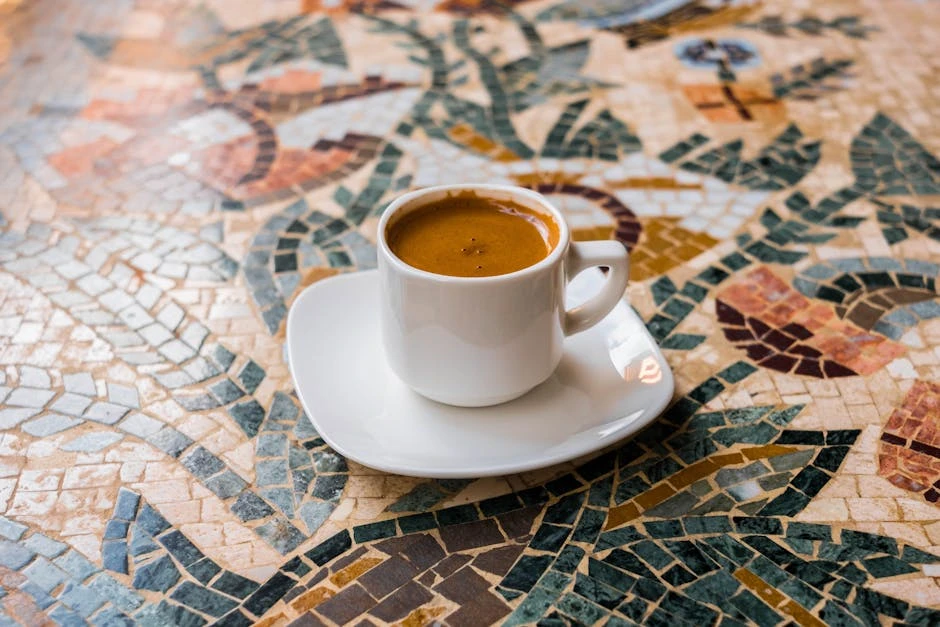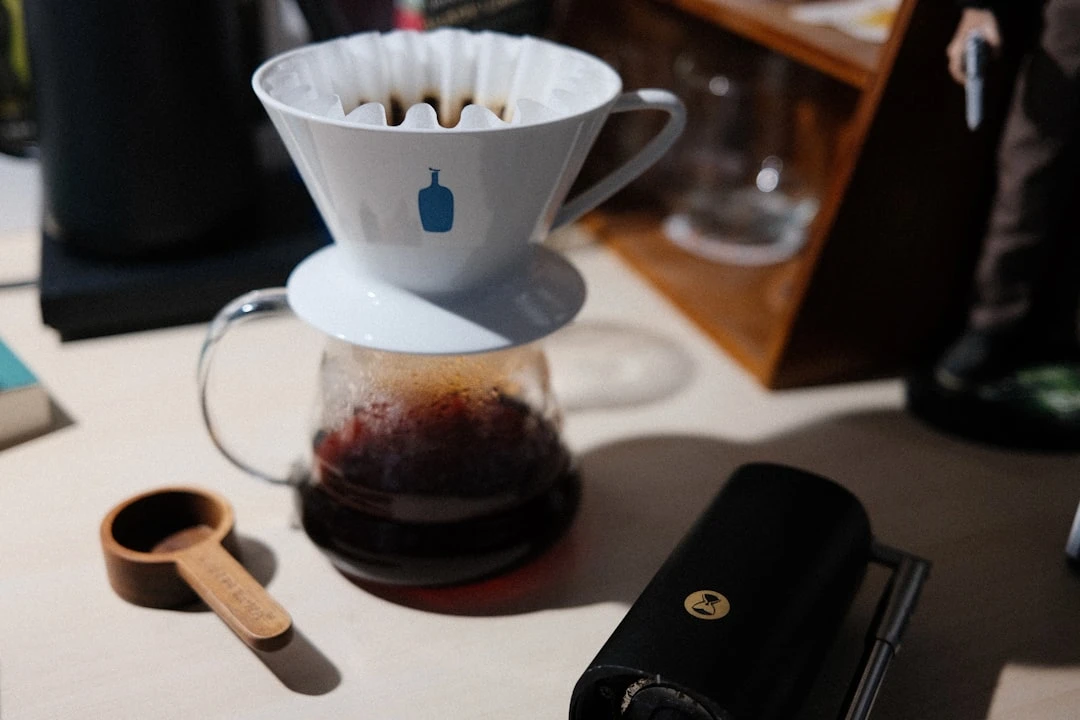Flat White vs Cortado: Which Has More Caffeine?

Picture this: I'm standing in line at my favorite coffee shop, confidently ready to order my "usual" flat white, when the barista asks, "Would you prefer that or a cortado today?" I froze. Honestly, I had no clue what the difference was, and I'd been ordering flat whites for three years thinking I was some kind of coffee expert!
Turns out, about 67% of coffee drinkers can't distinguish between these two popular espresso drinks. And honestly? I don't blame them. Both the flat white and cortado look pretty similar in the cup, but the differences are actually pretty fascinating once you dig into them.
The thing is, understanding these drinks isn't just about sounding smart at your local café. It's about finding the perfect coffee experience that matches your taste preferences. Whether you're a milk-forward coffee lover or someone who wants that espresso punch to wake you up, knowing the difference between a flat white and cortado can completely change your morning routine.
What is a Flat White?
Let me be real with you - I used to think a flat white was just a pretentious way of saying "coffee with milk." Boy, was I wrong!
A flat white is an espresso-based drink that originated in Australia and New Zealand in the 1980s. The drink consists of a double shot of espresso topped with steamed milk that's been textured to create microfoam. What makes it special is the milk-to-coffee ratio and the specific way the milk is prepared.
The key thing about flat whites is the milk texture. The steamed milk should be velvety and smooth, with tiny microbubbles that create what we call "microfoam." It's not the thick, fluffy foam you see on cappuccinos - it's more like liquid velvet that's been perfectly integrated with the milk.
I remember the first time I watched a skilled barista make a proper flat white. They heated the milk to exactly 140-150°F (60-65°C), creating this glossy, paint-like texture that could actually hold latte art. The milk shouldn't be scalding hot - that's a rookie mistake that ruins the sweetness of the milk.
The traditional serving size is typically 5-6 ounces, served in a ceramic cup. The espresso should still be prominent, but the creamy milk balances it perfectly. When done right, you get this amazing harmony where neither the coffee nor the milk dominates the other.
What is a Cortado?
After my flat white embarrassment, I decided to actually learn about cortados. Turns out, this Spanish drink has been around way longer than I thought, and it's got some serious attitude.
A cortado comes from Spain, specifically from the Basque region, and the name literally means "cut" in Spanish. The idea is that the milk "cuts" through the acidity and intensity of the espresso. Pretty poetic for a coffee drink, right?
The traditional cortado is made with equal parts espresso and warm milk. Notice I said warm milk, not steamed milk with microfoam like the flat white. This is where things get interesting - the milk in a cortado is heated but not textured with much foam at all.
I made the mistake of ordering a cortado expecting it to be like a small latte. Wrong again! The cortado hits you with more coffee intensity because there's less milk to dilute the espresso. It's typically served in a small glass cup, about 3-4 ounces total.
What really surprised me was how the temperature plays into it. The cortado is served at a slightly lower temperature than most espresso drinks, making it perfect for drinking immediately. No waiting around for it to cool down like I always do with my flat whites.
The milk in a cortado shouldn't have that glossy microfoam texture. It's more like warm milk that's been gently heated, maybe with just a tiny bit of foam on top. This keeps the focus on the espresso while still providing that creamy mouthfeel.
Key Differences: Size, Milk Ratio, and Texture
Okay, here's where I finally figured out why I was so confused for all those years. The differences between these drinks are subtle but really important once you know what to look for.
Size and Serving: The flat white is typically larger - around 5-6 ounces served in a ceramic cup. The cortado is smaller and more concentrated at 3-4 ounces, traditionally served in a glass. I always wondered why cortados came in those little glasses - turns out it's part of the traditional Spanish presentation.
Milk Ratios: This is the big one. A flat white usually has about 1:3 or 1:4 ratio of espresso to milk. So you're getting a double shot with quite a bit of steamed milk. The cortado is typically 1:1 - equal parts espresso and milk. That means way more coffee intensity per sip.
Milk Texture: The flat white gets that signature microfoam - creamy, velvety milk that's been steamed to create tiny bubbles throughout. It should pour like paint and be perfect for latte art. The cortado uses warm milk with minimal foam, maybe just a thin layer on top.
I spent way too long trying to taste the difference before I understood these technical aspects. Once I knew what to look for, it was like someone turned on the lights in a dark room.
Temperature: Flat whites are served hotter, around 140-150°F, while cortados are traditionally served a bit cooler, making them immediately drinkable. This was actually my favorite discovery - no more burning my tongue on the first sip!
Taste Profile Comparison: Which One Actually Tastes Better?
Here's where things get personal, and honestly, where I had to admit I'd been wrong about my own preferences for years.
Flat White Taste: The flat white is all about balance. The microfoam creates this creamy, almost dessert-like mouthfeel that mellows out the espresso. You get the coffee flavor, but it's rounded and smooth. The milk sweetness really comes through because of how it's steamed. If you like your coffee creamy and approachable, flat whites are probably your jam.
I used to think this was the "sophisticated" choice, but really it's just the more milk-forward option. There's nothing wrong with that - sometimes you want that comforting, creamy coffee experience.
Cortado Taste: The cortado is more aggressive with the coffee flavor. Since there's less milk and it's not textured the same way, the espresso really shines through. You get more of those coffee notes - the acidity, the origin flavors, sometimes even a bit of bitterness if the beans are roasted darker.
The first time I had a proper cortado, I was honestly a bit overwhelmed. It was like drinking coffee for the first time all over again. The milk is there to soften the edges, but the espresso is definitely the star of the show.
Which One's Better? This is where I'm gonna be honest - it completely depends on your mood and what you want from your coffee. When I want something comforting and smooth, I go for the flat white. When I want to actually taste the coffee and feel more awake, I choose the cortado.
The cortado definitely has more caffeine impact per ounce because of that higher coffee-to-milk ratio. If you're trying to cut back on milk or calories, the cortado wins hands down.
Origins and Cultural Differences
Learning about where these drinks come from actually helped me understand why they're so different. It's not just random - there's real cultural reasoning behind each one.
Flat White Origins: The flat white debate is still going strong between Australia and New Zealand. Both countries claim to have invented it in the 1980s, and honestly, the arguments get pretty heated. What I found interesting is that it was basically a reaction to the poor-quality cappuccinos that were common at the time.
Australian and New Zealand coffee culture was all about perfecting the milk texture. They wanted something creamier than a cappuccino but not as milky as a latte. The flat white was their solution - showcasing both the espresso and the barista's milk-steaming skills.
Cortado Origins: The cortado comes from Spain's Basque region and has been around much longer - we're talking early 1900s. Spanish coffee culture is different from the Australian/New Zealand scene. They wanted something simple and functional - good espresso softened just enough to be drinkable.
What's really cool is how the cortado spread through Latin America and evolved differently in each country. In Cuba, they make it with condensed milk. In Argentina, it's called a "cortadito" and might have a bit more milk.
The cultural difference shows in how each drink is consumed too. Flat whites are often a leisurely morning drink, while cortados are more of a quick afternoon pick-me-up.
How to Order Like a Pro
After years of coffee shop confusion, I've finally figured out how to order these drinks without looking like a complete amateur. Here's what I wish someone had told me earlier.
Ordering a Flat White: Be specific about the milk if you have preferences. Most places use whole milk by default, but oat milk actually works really well in flat whites because it steams similarly. Ask for "extra hot" if you like it steaming, or "kids temp" if you want to drink it immediately.
Don't be afraid to ask about their espresso blend. Some places use different beans for milk drinks, and it can completely change the flavor profile. I learned this the hard way when my usual order tasted completely different after they switched beans.
Ordering a Cortado: Here's where it gets tricky - not every café knows how to make a proper cortado. If they look confused, you can ask for "equal parts espresso and warm milk, minimal foam." Some places will try to make it like a small latte, which isn't right.
If they serve it in a large cup, that's usually a red flag. A proper cortado should come in a small glass or cup, around 3-4 ounces total. Don't be shy about asking - you're paying for it!
General Tips: Visit during off-peak hours when baristas have more time to focus on your drink. The difference in quality is noticeable, especially for drinks that require specific milk texturing.
Learn your barista's name and build a relationship. Good baristas take pride in their craft and will often go the extra mile when they know you appreciate the difference.
Making Them at Home: Equipment and Techniques
Once I started making these at home, I realized why café versions are so much better - and also why it's worth learning to do it yourself. The equipment makes a huge difference, but technique matters even more.
For Flat Whites at Home: You really need an espresso machine with a steam wand to get that proper microfoam. I tried making it with a French press and heated milk, and it was... not good. The texture is everything with flat whites.
The key is getting the milk temperature right - between 140-150°F. Too hot and it scalds, too cool and it doesn't integrate properly with the espresso. I use a thermometer until I got the feel for it.
Start with cold milk in a cold pitcher. Position the steam wand just below the surface and create microfoam for the first few seconds, then plunge the wand deeper to heat the milk. The whole process should take about 30-45 seconds.
For Cortados at Home: Cortados are actually easier to make at home because you don't need perfect microfoam. You can even use a milk frother or heated milk in a saucepan if you're careful about temperature.
The trick is using less milk - about equal parts to your espresso shot. Heat it gently, don't let it boil, and you're good to go. I actually prefer making cortados at home because they're more forgiving.
Pro Tips: Use fresh, good-quality espresso beans. The coffee flavor is more prominent in both drinks, so cheap beans really show their flaws. I learned this after wondering why my home versions tasted so different from café versions.
Practice your milk steaming technique. It takes time to get consistent results, but once you figure it out, making these drinks at home becomes second nature.
Which Should You Choose?
After all this trial and error, here's my honest recommendation based on different situations and preferences.
Choose a Flat White If: You like creamy, smooth coffee drinks. If you usually order lattes but want something a bit stronger, flat whites are perfect. They're also great if you're new to espresso-based drinks and want something approachable.
The flat white is my go-to morning drink when I want something comforting but not too heavy. It's also better for latte art if that matters to you - the microfoam holds designs much better than cortado milk.
Choose a Cortado If: You want to actually taste the coffee. If you're trying to appreciate different espresso blends or origin flavors, the cortado lets you experience them without too much milk interference.
Cortados are perfect for afternoon coffee breaks when you want a quick energy boost without feeling too full. They're also great if you're watching your milk intake or trying to reduce calories.
My Personal Rotation: Honestly, I don't stick to just one anymore. I'll order a flat white when I want something leisurely and comforting, usually in the morning or when I'm catching up with friends. Cortados are my choice when I need a quick caffeine hit or want to try a new coffee shop's espresso blend.
The best part about understanding both drinks is that you can make informed choices based on your mood, the time of day, and what you want from your coffee experience.
Conclusion
Looking back on my coffee journey, I'm honestly embarrassed it took me so long to figure out the difference between flat whites and cortados. But I'm glad I finally did, because understanding these drinks has completely changed how I experience coffee.
The flat white vs cortado debate isn't really about which one is better - it's about understanding what you want from your coffee experience. Whether you prefer the creamy, balanced approach of a flat white or the bold, espresso-forward character of a cortado, both drinks have their place in the coffee world.
Remember, every café makes these drinks slightly differently, so don't be afraid to ask questions or try variations. The most important thing is finding what works for your taste preferences and daily routine. Maybe you're a flat white person in the morning and a cortado person in the afternoon - that's totally valid!


